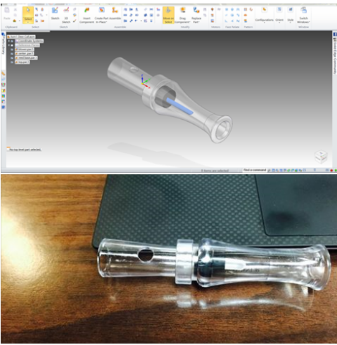Project-Based Learning – Shaping Futures

At Fountain Lake High School in Hot Springs, Arkansas, project-based learning is engaging future engineers. Students are excited to come to school, and their proud teacher feels lucky to be part of his students’ journey. Check out this Facebook page. There, you will see a photograph of Toby Craver’s class — a group of 10 students recruited as part of the Southern Regional Education Board (SREB)-sponsored project-based learning initiative, Advanced Career (AC). The AC pathway program is called Integrated Production Technologies, and it consists of four advanced manufacturing courses that the school will implement over a two-year span, with classes consisting of a two-hour block each day. In this class, students sign contracts and agree to standards of conduct that include accountability to their team members, work ethic, communication and leadership expectations — characteristics that reflect real-world work life. Students are rewarded for leadership qualities and are recognized by peers as “hardest working,” when their efforts are outstanding.
In addition to learning the soft skills that are critical to excelling in today’s workforce, the real story is the effectiveness of the comprehensive project-based learning experience. In a few short weeks, Craver’s students have used Solid Edge to reverse engineer a project, built motors, and worked with programmable logic boards. The projects become more challenging as the class progresses.

A challenging project includes designing a gyroscope.
The finished product is nearly identical to the 3-D model. (It is hard to tell the difference!)
 Students also design, 3-D print, and assemble a deer call using multiple parts.
Students also design, 3-D print, and assemble a deer call using multiple parts.
According to Craver, the students like using Solid Edge, largely because of the many choices available for designing a product which makes it fun to use and learn. Moreover, they take the initiative to work on projects in the evenings, not because they have homework assignments, but because they are engaged and having fun. The students experiment with the commands they learn and work together to explore new applications for commands. The students’ knowledge of Solid Edge helps them to quickly learn and use 3-D printing systems. A recent field trip to the “world’s largest 3-D printer farm,” on the campus of the College of the Ouachitas in Malvern, Arkansas provided students the opportunity to see the technology in action.
Photographs of a stress test on an I-beam using Solid Edge software and a custom-designed protractor posted on the class Facebook page illustrate the students’ journey and real-world experiences. Students taking part in the Advanced Career Integrated Production Technologies class are growing their skills, and their confidence emerges in their designs. At first, we’re looking at Legos … soon after, we’re looking at 3-D printed Legos.
In this class of three seniors and seven juniors, engineering futures are definitely part of the discussion. Students who might not have considered engineering are now thinking of ways to apply skills they never knew they had, and they are visiting post-secondary schools with engineering on their minds. They have successfully “sold” the program to their peers, so much so that the class could possibly double in enrollment next year.
As Craver states, “I simply give them the essential question for the project and let them run with it. I have seen these students do some amazing things. This is the reason I started the Facebook page, I wanted the public to be able to see what I witness every day.They are an amazing group of kids.” He’s right – they clearly are amazing. Toby’s pretty special too.
Notes: The Southern Regional Education Board (SREB) works with states to improve public education at every level, from pre-K through Ph.D. A nonprofit, nonpartisan organization based in Atlanta, SREB was created in 1948 by Southern governors and legislatures to advance education and improve the social and economic life of the region. Today, SREB works with over 30 states throughout the U.S. In 2010, SREB created the Advanced Career initiative to deepen learning in career technical education and boost students’ success after high school. SREB partnered with states in a multi-state consortium to develop curricula, assessments, and instructional and teacher/counselor training materials that provide students with relevant and challenging CTE courses that align with the academic standards and workforce needs of partner states. Representatives from industry and post-secondary institutions shaped the curriculum design and technical content. Serving as an expert panel, they continue to collaborate with secondary educators, state education agency staff and SREB to identify authentic learning experiences for students. For more information about SREB’s Advanced Career curriculum, visit: www.sreb.org/ac.



Comments